- Author: Jane Callier
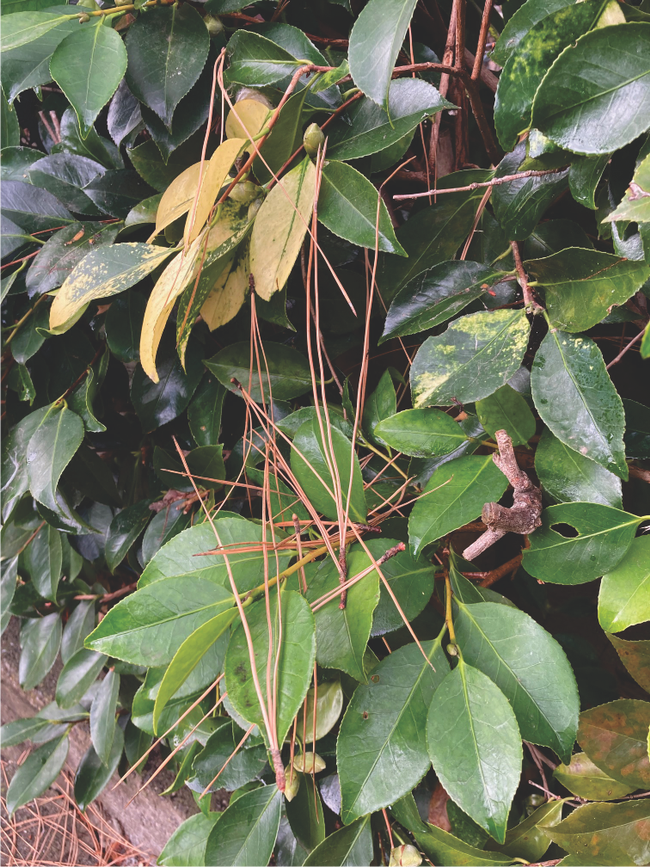
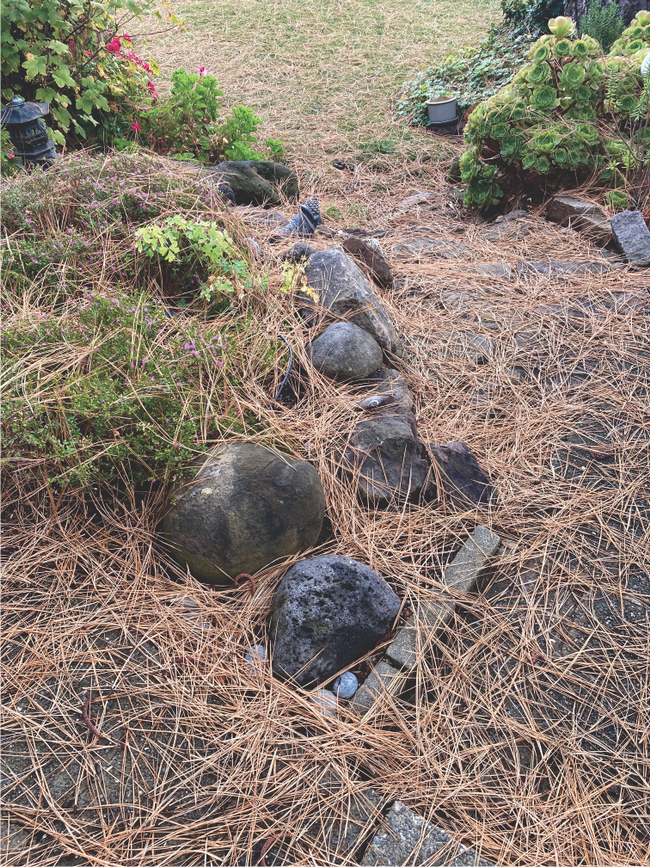
Is there anything positive to share about this poor, huge tree? Ponderosa pines are handsome trees with their reddish-brown bark and invoke the western United States. They are drought resistant trees, fire-resistant (as long as there aren't thousands of dry needles on the ground), and provide habitat for wildlife. They also make great lumber. Master Gardeners are taught right plant, right place from the beginning of training class. Given the right place, that being a very large property or a forest, this plant is a beauty to behold.
Napa Master Gardeners are available to answer garden questions by email: mastergardeners@countyofnapa.org. or phone at 707-253-4143. Volunteers will get back to you after they research answers to your questions.
Visit our website: napamg.ucanr.edu to find answers to all of your horticultural questions.
Photos by Jane Callier
- Author: Donna Woodward, Field Test Committee Chair
Summer is winding down and the produce from our gardens is starting to wane. I just cut down my Prairie Fire tomato that I had planted as part of our experiment with growing tomatoes in containers. Our Napa Master Gardeners Field Test Group embarked on a trial following the tomato sale in April to see how we would fare with growing tomatoes in containers. We also enlisted input from 42 members of the public who purchased tomatoes at the sale.
The three tomato varieties that were selected for the trial were Prairie Fire, Renee's Super Bush, and Inca Jewel. Of the three, Prairie Fire was the most successful for me. It produced lots of delicious grape-type tomatoes. They were not quite as sweet as Sun Gold or similar cherry tomatoes, but I found the flavor more interesting. Lately the plant was starting to look stressed, and the fruit was getting splotchy, so I decided to terminate that plant.
My Super Bush started out very lush and green but after a couple of months some of the lower leaves began to turn brown and yellow. It has produced some nice tomatoes, and there are still green ones on the bush, but the harvest is not what I would consider plentiful. I have trimmed away all the dying leaves and hope it will revive enough to ripen the remaining tomatoes. I either watered too much, too little, or maybe it was a mishap with fertilizer. I think I had applied a too-strong solution because the leaf problem happened right after that.
The Inca Jewel met with a similar fate, and, while some of the tomatoes look fine, others are hard and mottled. Again, I trimmed all the dying leaves and am waiting for the last of the tomatoes to ripen.
A survey will soon be emailed to all of those who signed up to participate in the trial. Here are some photos of my plants now. I hope to get lots of input from all who participated in the trial.
.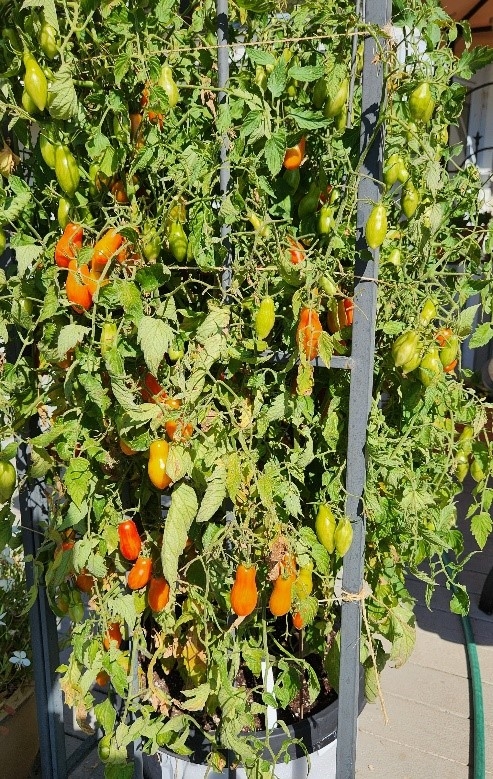
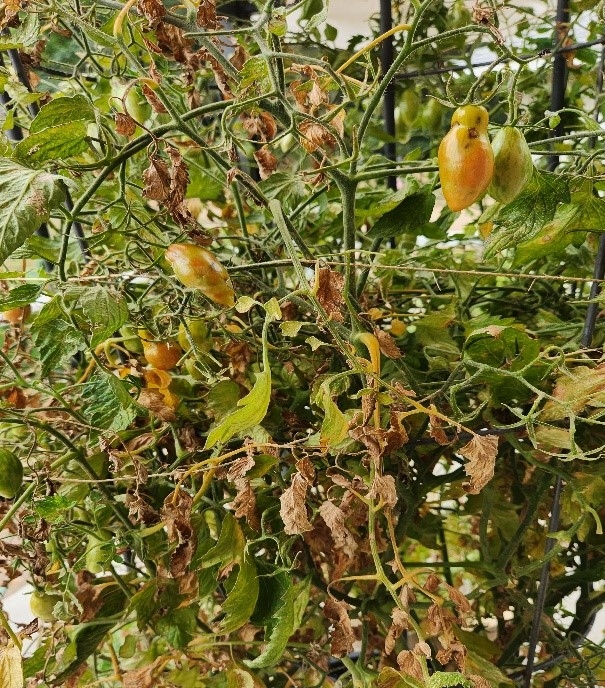
Napa Master Gardeners are available to answer garden questions by email: mastergardeners@countyofnapa.org. or phone at 707-253-4143. Volunteers will get back to you after they research answers to your questions.
Visit our website: napamg.ucanr.edu to find answers to all of your horticultural questions.
Photo credits: Donna Woodward
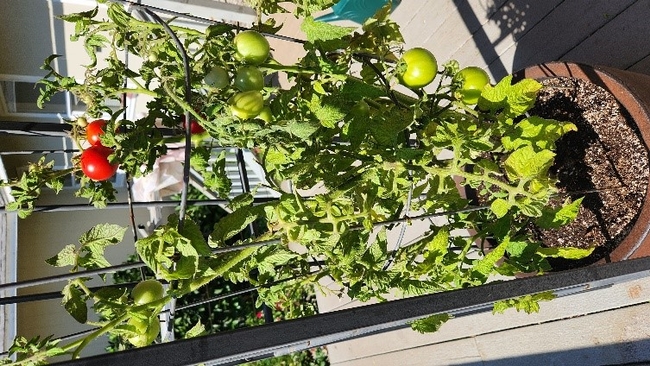
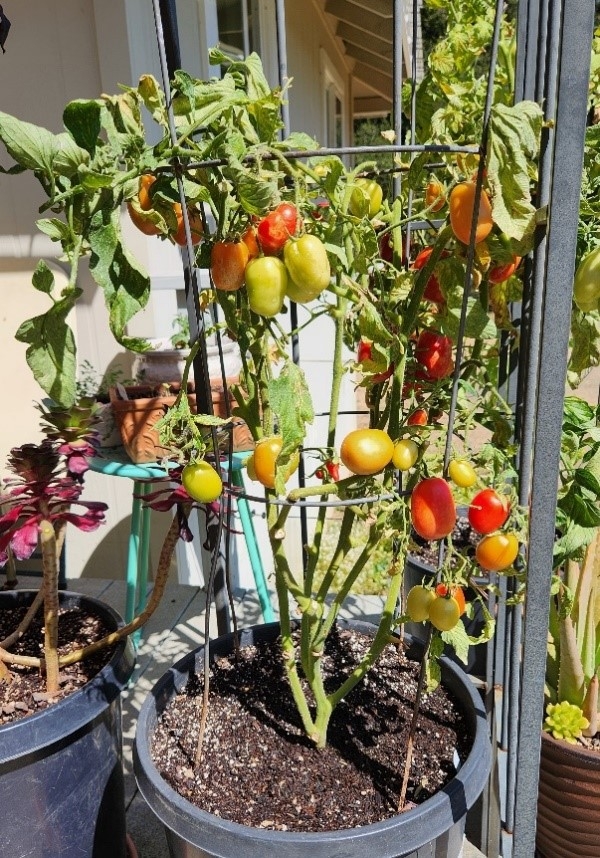
- Author: Cynthia Kerson
The last tour of the year occurred on August 4th and there was a great showing of Master Gardeners interested in learning from each other. We started off at a prolific property on Congress Valley Road where vegetable gardens are intermingled with pollinizers and chickens (well maybe not the chickens, but they and their offspring were definitely present).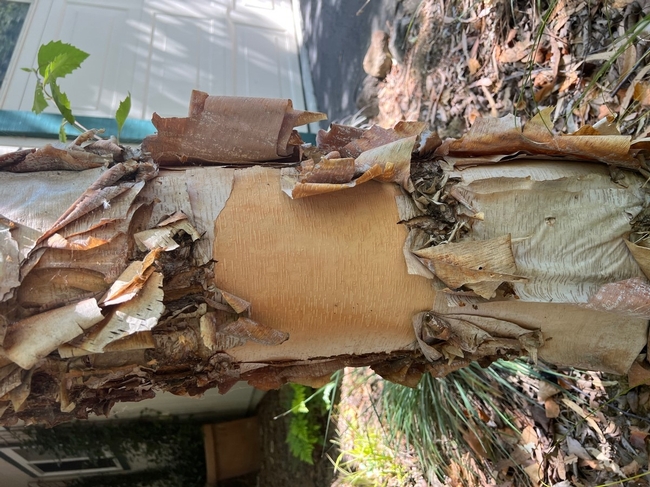
In addition to the vegetable gardens, there are a few fruit trees interspersed amongst the many olive trees. Italian plum and a 4-type hybrid apple stood out .
Within the gardens is a bed of Floriani red flint corn, grown specifically for making polenta. This MG's latest interest is to take garden areas and make them pollinator-friendly. It's succeeding in a big way and attracting lots of bees. He's also converted a vegetable bed into a California native garden, probably as a result of his time spent leading similar efforts at the Las Flores Learning Garden.
We all admired the tree in the front yard –maybe a bit too much. One visiting MG was curious and picked at a spot. You can see what's underneath the papery bark, prompting the question, “is this what inspired paper"?
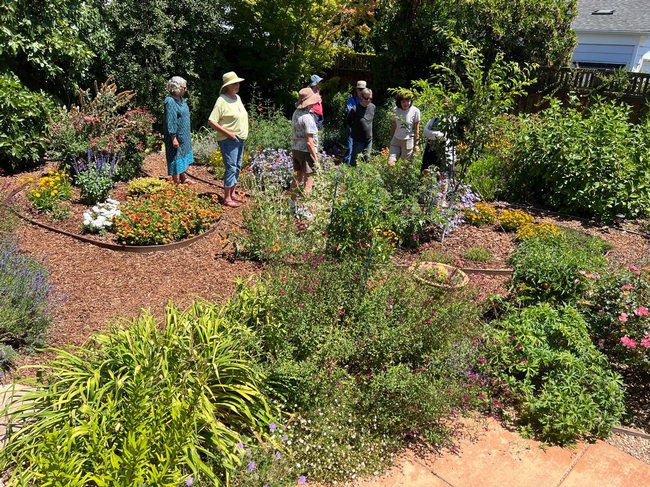
Fall fast approaches, and with it comes the perfect time to consider adding native trees, shrubs and flowers to create your own pollinator garden. A great resource for ideas to get you started (or improving) a native habitat for pollinators is: https://arboretum.ucdavis.edu/pollinator-gardening. The Napa chapter of the California Native Plant Society, https://chapters.cnps.org/napa/ , has information about planting and care of California natives and holds semi-annual plant sales at their location in Skyline Park. In addition, plan a trip to the Las Flores Learning Garden at 4300 Linda Vista in Napa to tour the pollinator and native plant gardens.
Napa Master Gardeners are available to answer garden questions by email: mastergardeners@countyofnapa.org. or phone at 707-253-4143. Volunteers will get back to you after they research answers to your questions.
Visit our website: napamg.ucanr.edu to find answers to all of your horticultural questions.
- Author: Melody Kendall
A garden with a variety of plants with colorful blooms that produce pollen and nectar attracts and helps to support a variety of birds, butterflies, moths, and beneficial insects year-round. These visitors play a critical role in sustaining our ecosystem by helping our plants reproduce. Pollinator gardens provide the habitat, plants, pollen, and nectar to help us care for our wildlife partners. A pollinator garden can also give much personal satisfaction in the process so, investigate the many types of pollinators in your area and tailor your garden plans to supply their needs. In this final article dedicated to plant pollination we'll focus on plants that encourage those very important pollinating guests.
Research has shown that native bees prefer native plants in a 4 to 1 ratio, though they will feed on introduced plant species when given no other choice. In the past, flowers with showy blooms have been the ‘go to' for many gardeners. Humans enjoy the riot of color provided by various varieties of these hybrid plants. Unfortunately, we have failed to consider the pollinator's needs as many of these hybrid plants, while providing lovely visuals, are short on the nectar and/or the pollen needed to support hard working pollinators.
We have lost many wild land areas to development but we can help mitigate that loss by creating pollinator oases in our personal landscapes. In fact, recent research has shown that urban plantings have had a very significant positive influence on the native bee populations. Planting in different banks or blocks using a different pollinator friendly plant for each block creates areas where a variety of pollinators are encouraged and can load up on nectar and pollen without having to travel long distances between each flower. For example, native bees usually nest within 50 feet of their foraging sites.
When planning your garden make sure to consider the early risers and the late comers. Put in plants that bloom early in spring and some that will have flowers well into the late fall and winter. Rather than prune the dry seed pods in the late fall, leave the seeds for the winter foragers. Think of it as a slowly rotating smorgasbord for all those wonderful pollinator workhorses. Also, a garden set up like this will provide you a wonderful changing panorama as these cycles progress through the seasons.
California has many diverse native plant species available that are tailor-made to support our native pollinators. Here area few examples of early and late bloomers:
v Early bloomers
- Herbaceous flowering plant
- Baby blue eyes Nemophila menziesii is a low growing annual with low water needs. It has stunning sky blue flowers that attract native bees, including mason bees (Osmia spp.); tolerates moderate shade and moisture
- Shrub
- McMinn manzanita Arctostaphylos ‘McMinn' is a tall (5ft) perennial with low water needs. It has clusters of small, bell-shaped flowers that provide early season forage for bumble bees and other spring bees and will tolerate clay soils
v Early-mid bloomers
- Herbaceous flowering plant
- The iconic
- is an annual that is also a perennial because of its prolific self seeding properties. With its low water requirements it is easy to establish and long blooming; attracts a diversity of bees, bumble bees in particular.

- Shrub
- California flannel bush Fremontodendron californicum a low water perennial that can reach 15 ft. It is a prolific bloomer with large, bell-shaped yellow flowers. It does not need summer water.
v Mid bloomers
- herbaceous flowering plant
- Narrowleaf milkweed Asclepias fascicularis is a 12-18 9nch tall perennial with medium water needs. This is a Monarch butterfly host plant and it's a high-quality nectar source for many bees. It is easier to establish from transplants than from seed.
- ShrubCalifornia buckwheat Eriogonum fasciculatum
- is a perennial that grows to about 30 in high and drought tolerant. It is a favored nectar source of many blue and hairstreak butterflies and also very attractive to native bees.

v Mid-late bloomers
- Herbaceous flowering plant
- Common sunflower Helianthus annuus is a very tall (5 ft) annual with medium water needs. A favorite of many bee species and easy to establish. It is tolerant of clay soils.
v Late bloomers
- Herbaceous flowering plant
- California fuchsia Epilobium canum is a medium tall (3ft) perennial with low water needs. It has abundant scarlet-colored flowers and is a critical late-season nectar source for hummingbirds and bees.
For more information on these and many more California native plants: Xerces.org-plants for pollinators
There are many pollinator plants that aren't California. natives. Some of the best non-native, pollinator-attracting annual and perennial flowers are: agastache, ageratum, allium, betony, catmint, cornflowers, cosmos, lavender, Mexican sunflowers, pentas, Russian sage, salvia, sedum, verbena, veronica, yarrow, and zinnia. Use these plants to round out your garden and create diversity in your landscape. Contrary to popular belief pollinator attractive plants don't have to be herbaceous flowering plants; they can also be herbs that you allow to flower. Let your dill, parsley and other herbs 'bolt' or go to flower, then stand back and watch the pollinators enjoy themselves.
We hope the information in this series can be an inspiration to create a pollinator garden of your very own. Having a pollinator friendly landscape will not only benefit the pollinators, it will give you hours of entertainment and contribute to a healthy environment in your own backyard.
Information links: Las Flores Learning Garden-Plants for Pollinators
Napa Master Gardeners are available to answer garden questions by email: mastergardeners@countyofnapa.org. or phone at 707-253-4143. Volunteers will get back to you after they research answers to your questions.
Visit our website: napamg.ucanr.edu to find answers to all of your horticultural questions.
Photo credits:
LFLG pics all taken by MGs: Las Flores Learning Garden-Plants for Pollinators
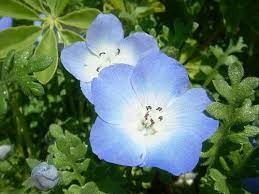
- Author: Melody Kendall
There are around 350,000 pollinator species in the world. Though they are the most recognizable, bees are not the only plant pollinator team in town. Other insects that help to carry this responsibility are. butterflies, flies, moths and beetles. These, along with birds, bats and other small mammals and lizards, fill out the plant pollinator roster. Let's look at some of these often unrecognized helpmates.
Butterflies and moths
When thinking of gardens and pollinating butterflies often come to mind. Though butterflies are not built for pollination they do move the pollen as they flit from one nectar filled flower to another. They like brightly colored flowers that offer ‘landing platforms' with their clustering growth habit.
Moths do pollinate flowers but only those that flower at night. Hawk moths or Morgan's sphinx moths are adapted to pollinate certain types of orchids and the yucca plant depends on the yucca moth for its pollination needs. The flowers that night dwelling moths pollinate are usually dull colored.
Birds
For many people hummingbirds are the bird world's pollinator icon, but there are often other birds doing pollination duties without recognition. There are honeycreepers in Hawaii, honeyeaters in Australia, brush-tongued parrots in New Guinea and sunbirds in the tropical old world, just to name a few. Over 2,000 bird species feed on nectar. Flowers with curved out petals that provide a platform, are bright colored and have lots of nectar are the main focus of these feathered pollinators. In their search for nectar these birds will visit a flower and, in the process, become dusted with pollen. They will then move on to the next flower for more nectar and leave some of that precious pollen dusting their feathers behind to fertilize that new flower.
Flies:
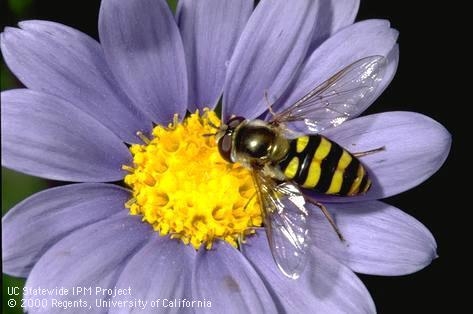
Bee flies (Bombylius species) are another important fly pollinator. They are bee imitators in their look but actually feed on bee larvae. The bee flies have long sucking mouth parts specially suited to pollinate flowers with deep, narrow tubes. Other pollinating flies are adult mosquitos, some adult fruit flies and carrion flies that are attracted to flowers with a fetid odor.
Wasps
Wasps are different from bees because, for the most part, instead of gathering pollen they catch prey to feed their larvae. In their search on the flowers for their prey the flower's pollen tends to stick to the wasp's body and then they inadvertently pollinate the other flowers they visit while hunting. There is one species of wasps called ‘pollen wasps' because they gather pollen to feed their larvae and over 1,000 different species of figs that rely on the tiny fig wasp to pollinate them.
Beetles
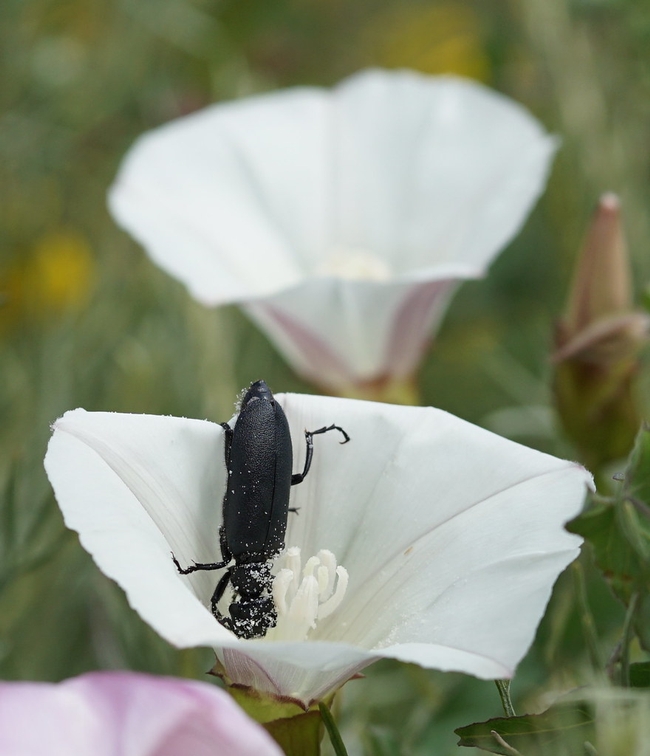
Other less known pollinators
Believe it or not there are still more pollinators out there and some may surprise you. Mammals like monkeys, lemurs, possums, bats and rodents and even some lizards join the party as well.
Though these are not found in our area they are interesting nonetheless. The largest known pollinator is the black and white ruffed lemur (Varecia variegata) of Madagascar. This mammal feeds on the traveler's palm by pulling the tough flowers open and sticking their snout inside for the nectar. Their nose gets covered with pollen and when they visit the next flower and stick their nose in, viola, that flower gets pollinated.
The lizard, the Noronha skink (Trachylepis atlantica) from Brazil, crawls into the leguminous mulungu tree's flower and while drinking the tree's flower's nectar becomes covered in pollen. When visiting the next flower that pollen is transferred to this new flower pollinating it.
Final pollinator notes: It's a wild kingdom out there.
- We tend to think of pollination as mutually beneficial between plants and pollinators. Many pollinators use plant parts and substances to assist in their own reproduction While it's sometimes a two-way street, this is not always so..
- Mimicry and deceit often prevail.
- Some pollinators are specialists and some are generalists.
- Some bees collect the scents of flowers to use for their own purposes. “Bee perfume,” if you will.
- Diverse plants with colorful blooms attract pollinators to your garden and help to support a variety of birds, butterflies, moths, and beneficial insects year-round. These visitors play a critical role in sustaining our ecosystem by helping our plants reproduce.
- Important: Avoid using pesticides where possible because they are indiscriminate and will kill many wonderful pollinating insects along with the pests. Choose from UCANR IPM-Integrated Pest Management methods detailed at: http://ipm.ucanr.edu .
Napa Master Gardeners are available to answer garden questions by email: mastergardeners@countyofnapa.org. or phone at 707-253-4143. Volunteers will get back to you after they research answers to your questions.
Visit our website: napamg.ucanr.edu to find answers to all of your horticultural questions.
Information links:


